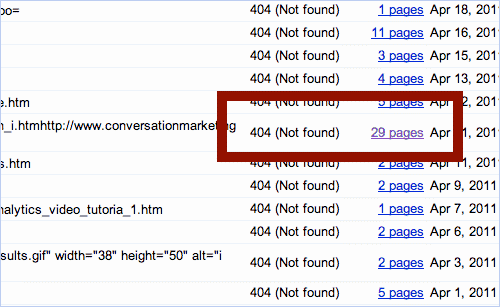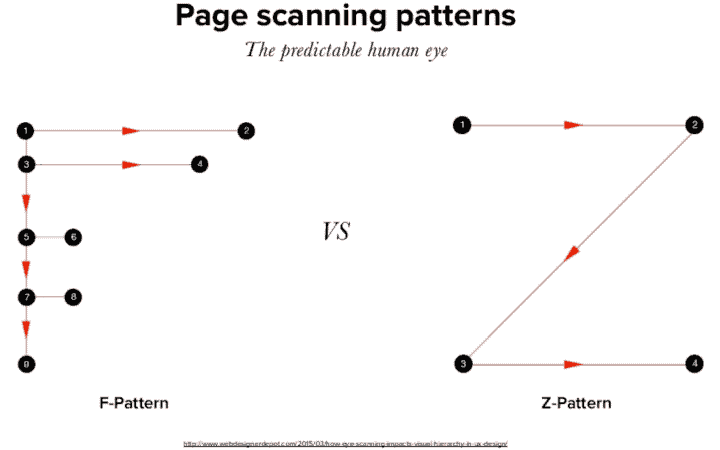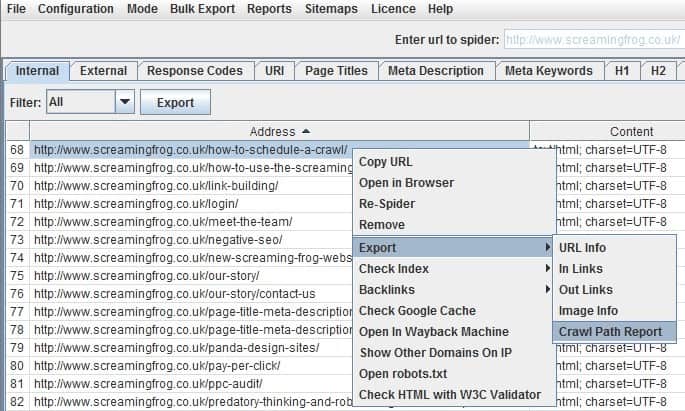Content creation has become a marketing mantra in the last few years. It seems like all companies are building their marketing strategies around content. Yet, not all marketers can measure content efficiency. According to the recent survey of B2B marketers:
55% of B2B marketers say they are unclear on what content marketing success or effectiveness looks like. // Content Marketing Institute.
Lack of clarity means that a lot of marketers waste time and money creating unproductive content. How to fix this? The answer is simple: You need to audit content on your website and determine what works and what doesn’t according to precise metrics. Next, we will give you a step-by-step guide to conducting your website’s content audit.
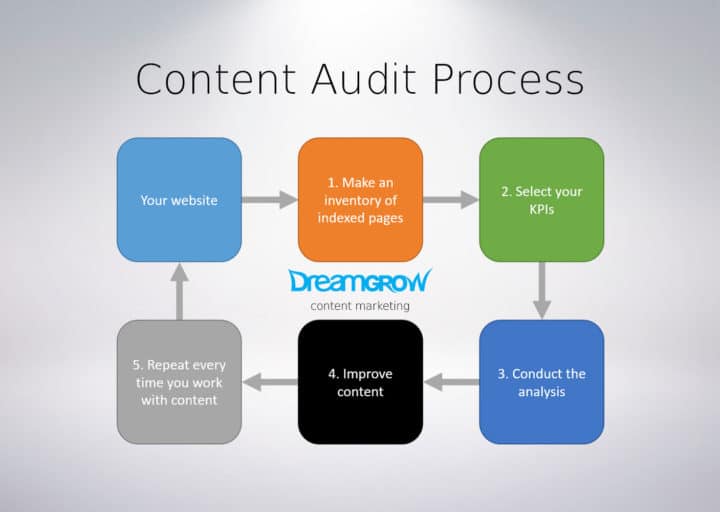
Why Do You Need a Content Audit?
Before you start the content analysis, you need to understand the logic behind this process. First, you should know that website content audit is not the same as SEO audit. Although it’s hard to completely separate these two procedures, SEO metrics will not play a lead role in the content audit. SEO goal is to reveal the technical performance issues of your webpage. But, the content audit is an in-depth process that focuses on quality of your blog posts and other content.
You have to analyze your work to see the results it produces. You need to conduct regular website content audits to find out what you can do better. Integrate the content audit process into your workflow. You will
- Work less and
- Get better results
More than 70% of companies realized their content marketing is inefficient. Waste of effort is exactly why you should conduct the audit and see how your pages perform. The purpose of website content audit is to reveal several important features:
Find problems with your content
The worst that can happen to your website is to have many useless pages. Technical flaws can ruin a lot of content. Users who find broken links will have a disappointing experience. That’s why you need to eliminate the painful ‘error 404 – page not found’ problem through website content audit. It will make all pages technically correct, and you won’t chase away users with broken links anymore.
Repurpose old posts
The best digital content is pretty much like tasty food – people love it fresh. However, sometimes the classics can help you to grab readers’ attention again and again. During your audit, you will find a lot of interesting material that you could repurpose. The simplest way is to update and your older content. Promote that content on social networks and wait for users to respond once again. But there are other ways to reuse old content.
For instance, content atomization. You can make a PowerPoint or SlideShare presentation with the most interesting conclusions. Always use new data to update old posts and make them more relevant for today’s readers. At the same time, you can take important information from your posts and compile them into an infographic. Here are just some of the ideas you can use, but the point is that content audit will give you enough material to repurpose old posts.
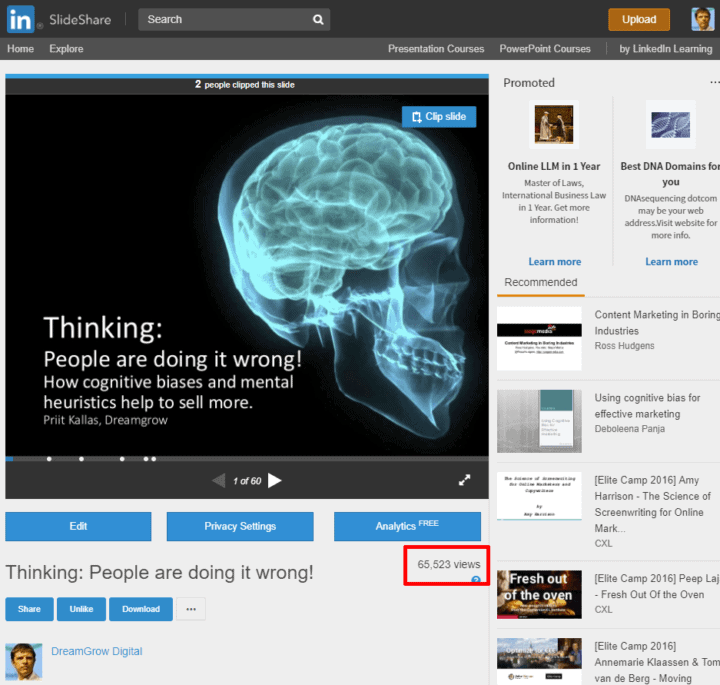
Content published as a blog post and uploaded to Slideshare. Read more, Content Atomization: How to Build a Social Media Bomb [+Infographic].
Analyze your content quality
In the abundance of digital content, users are not willing to waste time on boring, low-quality material. You need to analyze your content and see if they exceed the quality of your competitors. First, you will get an opportunity to improve the existing content. Second, improving the quality will create a new wave of interest in your content. Improvement in quality will lead to better search rankings in the long run.

Image dreamgrow.com Google Analytics: Improving content quality will increase traffic, SEO rankings, and conversions.
Boost SEO
We mentioned that content audit is not focused on SEO, but it will help. A lot! When analyzing your content, you will almost always find ways to improve some SEO factors. For instance, you will find out that you didn’t use the right keywords or that your posts lack proper sub-headings tags. In each case, you can make corrections and improve the SEO of your website, which can give you much higher search engine ranking.
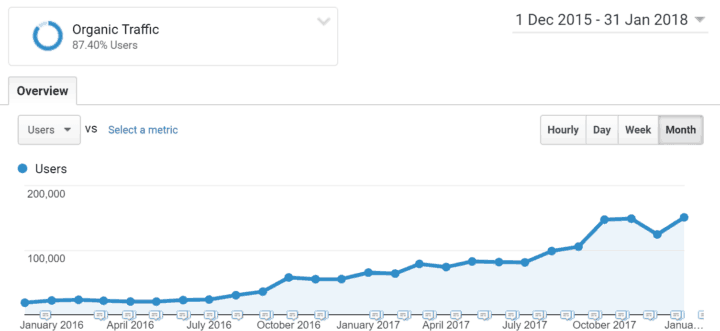
Improve your website design
Most people are visual, so the way you design content will have almost the same influence as the way you write it. You need to pay attention to webpage design and text flow: is it simple and attractive or an annoying wall of text? Are you using enough white space? Did you take the scanning patterns into account?
All these details can drastically improve the visual quality of your website content. After conducting the content audit, you will know how to react and what is your advantage or weakness in webpage design.
The easiest way to improve your readability is:
- Large type
- Short paragraphs
- Empty line between paragraphs
- Sub-headings
- Bullet lists
- Bolded phrases
- Takeouts
Next, you should rewrite complex sentences and paragraphs to make the text more appealing.
Hemingway
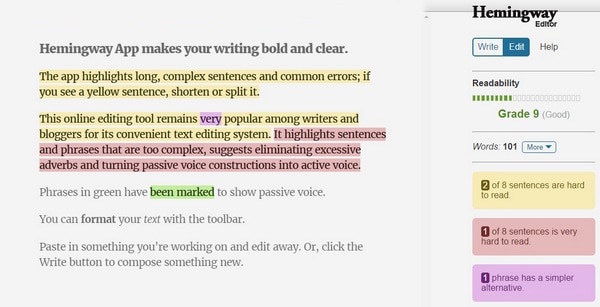
This online editing tool remains very popular among writers and bloggers for its convenient text editing system. It highlights sentences and phrases that are too complex, suggests eliminating excessive adverbs and turning passive voice constructions into active voice. Furthermore, the tool has document style settings and even shows a text’s readability score. It has a counter showing a total number of words, characters, paragraphs, and sentences so you can tweak a text’s structure if it lacks readability. The editor’s standalone version is available for PC and Mac. Once you finish editing, you can export a file in a markdown or .html format.
Take time to write better and practice daily writing.
Find the gaps in your content
Another important goal of website content audit is to find the gaps in your content. If you cover various topics, it's hard to cover them all completely. Using content audit, you see what is missing and create new posts to address these topics.
Website Content Audit Tools
The tools you choose for content audit depend on the type of your business and the metrics you want to analyze. Among dozens of useful options, there are a few software solutions that can do well in almost all cases. We will present you 5 of these tools that we enjoy using.
- Screaming Frog: This SEO spider is the first tool you will use while creating an inventory of website’s URLs. It enables you to do this job automatically, avoiding hours of manual work.
- Google Analytics: Google Analytics is the ultimate content audit service that allows you to explore various aspects of users’ on-page activities.
- XML Sitemap Generator: The URL analyzer will help you to find all links-related details (updates, changes, importance, etc.) but it is especially helpful when you want to detect broken links.
- Social Count: Most marketers focus on social networks, and they want to know how their followers engage with content on social media. Social Count reveals the most popular posts on Facebook, LinkedIn, Twitter, and other networks.
- Hemingway App: High-quality writing is an essence of content creation, and this app assists you in creating clear and straightforward website content.
How to Conduct Website Content Audit
Now you’ve seen everything you need to know about the background of website content audit. It is time to learn the actual steps of this procedure. I will make the audit process as simple as possible for you here:
1. Make an inventory of indexed pages
If you want to analyze website content, you need to make a list of indexed pages first. Screaming Frog will find and index all pages for you. Now copy the list of all pages into a spreadsheet. The only tricky part at this stage of the content audit is to decide whether you want to make a full inventory, a partial list, or just a sample.
We suggest you always do the full analysis. If you don’t have time, you can focus on certain parts of your website. For instance, your blog and news pages. In case you don’t want anything but the basic overview of website content, you can go for a sample inventory. However, this method is pretty much random, and it won’t always give you precise results.
One effective way to improve your results is first to focus only on pages that already convert.
2. Decide what your content marketing KPIs are
There are dozens or even hundreds of content marketing KPIs that you could look for in your analysis. We suggest you stick only to the relevant metrics. It will make this job easier and more productive. Here’s the list of these indicators:
Content type: Content can go anywhere between simple text post to multimedia.
Visits: Get the number of page visitors from Google Analytics. Start working on the pages that already have a lot of visits. Then move down the list and improve the less trafficked pages.
Quality: Make a scale to assess content quality. A simple ABC scale: good (A), average with potential for adjustments (B), or poor (C).
Readability: Using the Hemingway App, you can see post readability. Try to aim for the posts of 8 point mark of below.
Author: Some authors are better than others, and you should determine it through the audit.
Topic: Knowing the type of topic can tell you which ones are the most popular.
Word count/length: Some users prefer longer posts, while others demand conciseness. Through website content audit, you will determine the length or word count of every post.
Bounce rate: Pages with the high bounce rates indicate room for improvement.
Number of social media shares: This is a very relevant indicator if your target group spends most of the time on social networks.
Number of comments: User engagement is crucial for some businesses.
Average time on page: The best posts will probably have the highest average time spent on page, which tells you what to concentrate on in the future.
Conversions: Your business depends on conversions, so you should always measure this indicator. I import conversions from Google Analytics landing pages report to my audit table.
Conversion rate: Calculate the conversion rate by dividing conversions with visits and use that as a quality indicator.
Date last updated: Make sure you date your work. Dates will come in handy when you create a content audit process that fits right into your content creation and publishing workflow.
Page Authority: Use a metric like the Page Authority from MOZ or URL Rating from Ahrefs to measure the ranking power of the pages you audit. I use Prepost SEO's domain authority checker for getting the MOZ page authority in bulk.
You don’t have to use all the content KPIs listed above. Or you could come up with your own metrics that make sense for your site. The less data you use, the more likely you are to follow through.
3. Do the work! Conduct your analysis
Once that you’ve chosen the most relevant metrics for the content audit you need to go link by link and fill in the necessary information. Here is one example of this procedure:
- Content type: Blog
- Visits: 1000
- Quality: Average
- Readability: 10
- Author: Mark Harrison
- Topic: SEO
- Word count/length: 1733
- Bounce rate: 52%
- Number of social media shares: 8
- Number of comments: 3
- Average time on page: 3’43’’
- Conversions: 12
- Conversion rate: 1.2%
In our example, you can see that the quality of this post is average, while readability mark is 10. There are not too many social media shares or comments. You should try to improve the post to make it more relevant to your audience.
4. Improve! Now! Don’t wait!
After you have filled the table with metrics, you can add one more column. Call it ‘Activity’ or ‘To Do’ column in which you will put one of the following statements:
- Keep – you will keep high-quality content as is
- Optimize – optimize and improve average content
- Repurpose – atomize evergreen content
- Update – improve obsolete articles
- Remove – delete posts that you don’t want to improve, but make sure you 301 redirect the URLs to other to relevant, high-quality content
If you don’t want to forget anything, you can add ‘Comment’ section next to the ‘Activity’ column to describe actions you should perform on each one of your posts. After that, all you need to do is to get to work and improve your website content.
5. Rinse and repeat
Now you have done the main bulk of the work. Don’t let it go to waste! Repeat the process every six months. But then you just update the material that has changed. Or better yet, make this an on-going process that you build into your publishing schedule.
Every time you add content or improve your existing content take a look if you can improve something you already have and update the data for the content you are working with. Regularly updating your content audit database will lower your workload and improve your rankings.
That’s what most of us want! Better results with less work!
In this guide, we showed you a step-by-step guide to conducting your website’s content audit. Updating your existing content will give you a huge SEO boost with a lot less work than writing new content. Don’t hesitate to use our advice and feel free to let us know in comments if you need additional explanations about any one of these suggestions.


